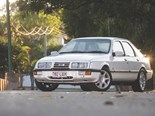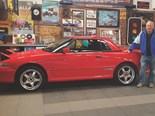1984 Mazda RX-7 Sports - Reader Ride
Just when you think you mastered mazda automotive history, another oddball RX-7 model appears
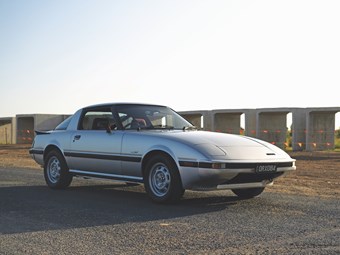
|
|
One of the prettiest cars to ever come out of Japan, and a rare variant.
|
In the tumultuous Group C racing era (1973-84), no car caused more controversy, sparked hotter debates, or fuelled greater political division than the Mazda RX-7. The sight and sound of Allan Moffat’s fire-breathing peripheral ported RX-7 rubbing panels around Bathurst with the big banger four-door taxis was something else; it showcased the prowess of the rotary engine and RX-7 as a serious race car.
Challenging the established norms in local Australian racing and racking up some impressive international wins at Sebring and Daytona, the RX-7 was an example of Japanese ingenuity and a well-balanced Sports car overall. Shaped like a bullet and with those iconic 1980s pop-up lights, the RX-7 was and remains a desirable Japanese motoring icon.
Marketed off the success and controversy of the Group C era, Mazda produced a limited run of Australian-delivered lightened race-ready FB Series 3 RX-7s from 1984-85, aptly named the Sports.
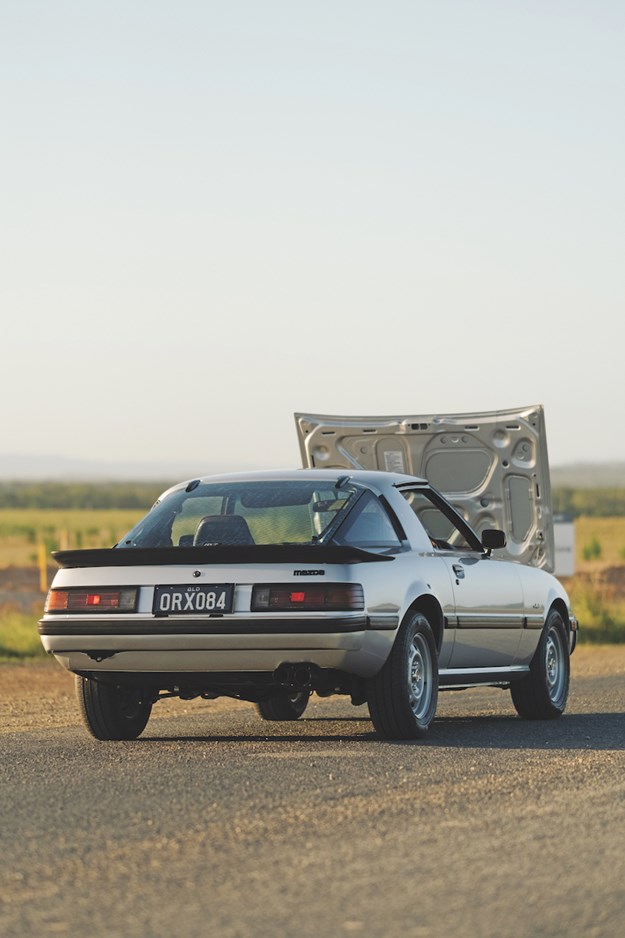
Minimum badging lends a clean look.
It came with no decals, badging or differentiating livery from a regular Series 3 RX-7; the easiest way to spot a Sports was to look for what wasn’t there. Mazda set about making it as lightweight as possible, deleting all the unnecessary fruit not needed for racing. The Sports had no headlight washers and no rear wiper, ran steel wheels, a factory rear rubber spoiler, no air-con, no radio, and wind-up windows instead of the standard power units. The seats were vinyl instead of cloth and slightly lower in the Sports to accommodate a driver wearing a helmet. The idea was that any would-be racer could slap on an IDA Weber, a bigger exhaust, a set of wheels and be ready to race.
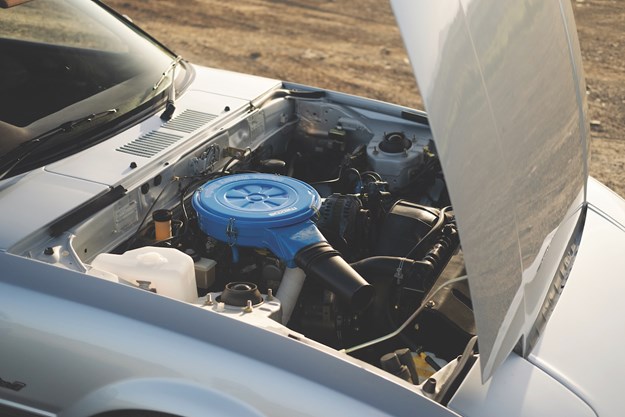
That’s an enviable engine bay.
In typical Aussie fashion, the Sports was nicknamed the "povo pack" due to its lack of creature comforts. If you ask around, every other person in the rotary community thought they owned one at one point or knew someone who did. However, with very little information on the number of Sports released, industry experts have speculated there would have been 30 produced at best, arguably making the Sports one of the rarer FB RX-7s.
The owner of our feature car and self-professed rotary tragic, Adam Harris, has one of the most well-maintained versions of the Sports after meticulously restoring the Hiroshima screamer over the last three years.
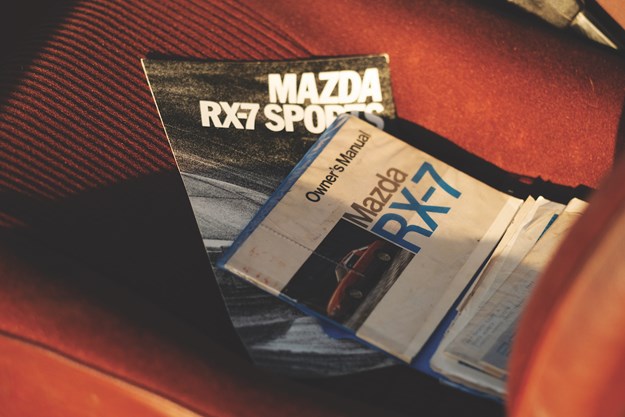
Original paperwork, including a very rare brochure, is a great find.
"I’ve owned the car since 2020. I knew of its location for about 10 years before I bought it. I would have walked past it 20 times over the years, buying RX-3 parts from the gentleman who owned it as I was restoring an RX-3 coupe at the time."
Restoring is an understatement, considering Adam’s white RX-3 coupe earned a spot on the boards at Motorclassica as one of Australia’s most original and meticulously restored RX-3s.
"I didn’t really give the RX-7 the time of day, but 2020 came around, and the RX-3 was gone. I thought ‘I wonder if it’s still in the shed. It would be a pretty cool thing to have’."
The car had been in the same spot since it was last registered in 1995 when Adam went to chat with the owner.

The Mazda was buried with an array of guitars and parked since 1995.
"It was not even recognisable that it was a car. It was covered in blankets and sitting under a pile of classic guitars, but I knew it was there. We peeled everything off it to access it, got the bonnet open and realised everything was completely stuffed. The motor hadn’t been started since ’95 and needed reconditioning; the battery had leaked in the engine bay; it was rough and needed a full restoration. On a positive note, it was dead straight, with no accident damage or rust, a big bonus when building old cars.
It looked even worse when it came out of the shed in the light of day. It had a hideous fibreglass front and rear period Group A-style kit and tri-spoke wheels. There were no modifications to the body whatsoever, so the Group A kit was just unbolted and went straight in the bin along with the wheels"
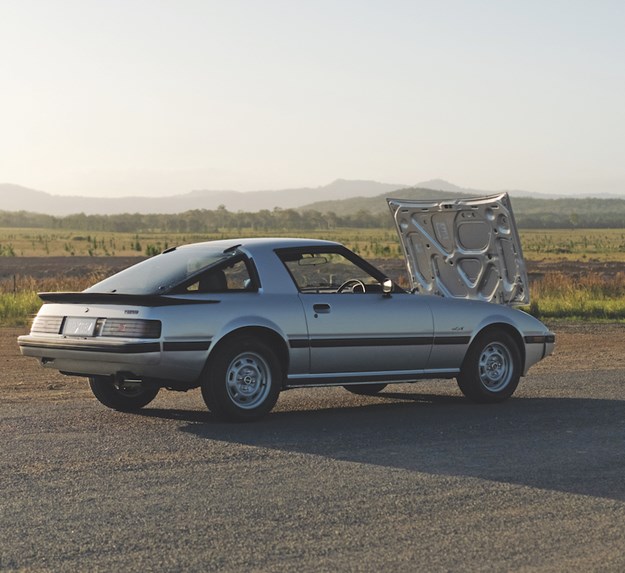
Elegant shape is a classic.
Adam decided to go all-original for the restoration, recognising the value of the Sports as a rare and historic collectible. He pulled the motor out and started prepping the body, sourcing the necessary parts, including the bumpers and steel wheels.
"The interior was in relatively good shape; it just needed tidying up. The car was still in the factory Sunbeam Silver, and the paint was pretty good; just faded in parts. I wanted to get away with not painting the whole car, but as these things go, I stripped it to a bare tub, put it on a jig, and sent it off to the panel shop."

Basic interior does the job.
While the body was away at the panel shop, Adam began refurbishing and replacing parts down to every nut, bolt and clip he could find.
"I went through every part, sandblasted, zinc-plated, and powder-coated everything that looked worse for wear. I replaced all the suspension, overhauled the brakes and tail shaft, reconditioned the gearbox, and sourced new 12a housings for the engine."
There are plenty of original parts for first-gen RX-7s, but Adam had to reach out to his many contacts in the rotary community to find the correct items for the Sports, right down to the pollution gear and replacement under-bonnet factory stickers. Nothing was missed.
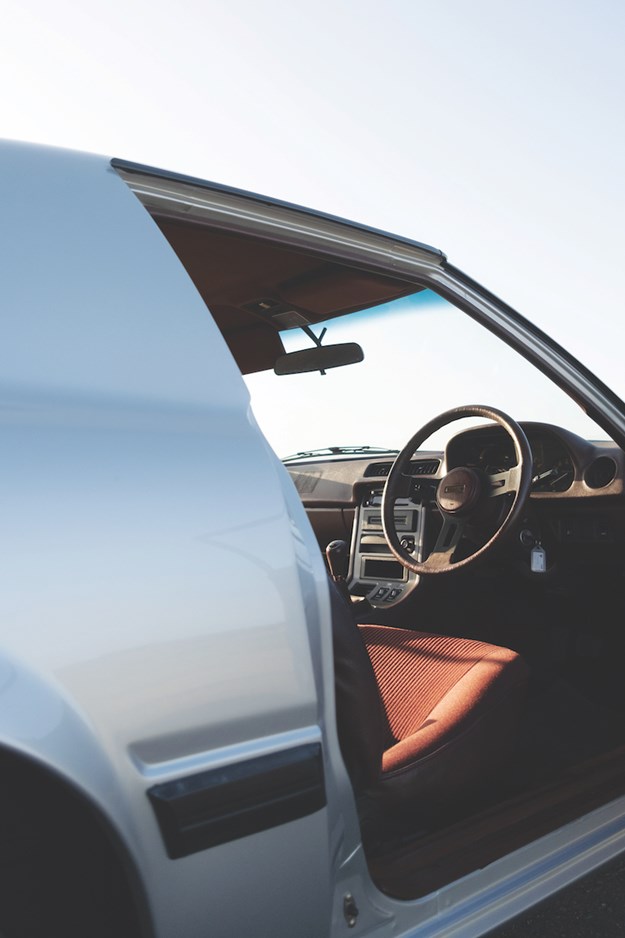
You can’t fault the detail.
"I managed to source a factory exhaust system from a guy down in Melbourne, which was a great find as most standard RX-7 exhausts found their way into scrap bins over the years in favour of more free-flowing systems. I opted not to put on the thermal reactor and have a set of extractors, but from the extractors back, it’s all original, including the twin-tip muffler. It probably slows it down and sounds terrible, but it looks cool."
Adam reckons the correct Sports wheels were the most challenging part to find during the restoration, but keeping the project as original as possible was worth the effort.
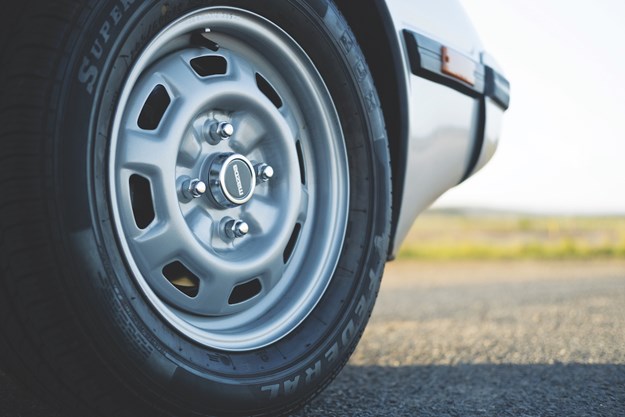
Wheels were a major challenge to find.
"I looked high and low for a set of correct wheels for the Sports and found a set in Cairns. They were off a Mazda 929 sedan, of all things. Mazda ran the same steel wheels on the 929 in Australia and many other models in Japan. I’ve toyed with running a different set of wheels, but they’ve grown on me. I’ve taken it to a few car shows, and people always ask if it’s a Sports as soon as they see the wheels and rear rubber spoiler."
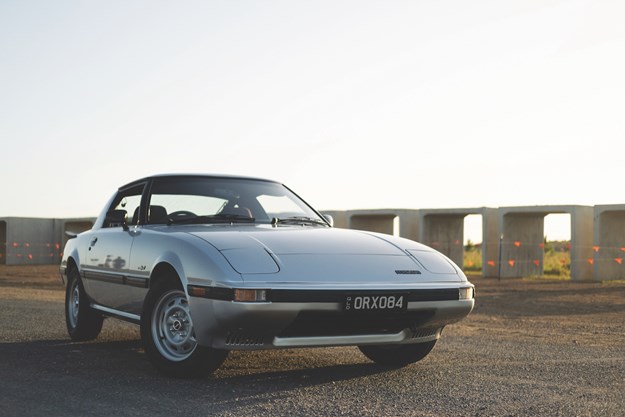
During the restoration process, Adam acquired the car’s original service book and delivery papers, an original brochure, and a spare set of keys. The car’s provenance has also been verified by Mazda as a genuine Australian-delivered car. The attention to detail on Adam’s Sports is incredible, from the correct under-bonnet satin finish to the Mazda factory stickers. Every detail has been painstakingly adhered to, making this a pristine example of iconic Mazda history.
Unique Cars magazine Value Guides
Sell your car for free right here
Get your monthly fix of news, reviews and stories on the greatest cars and minds in the automotive world.
Subscribe

.jpg)







